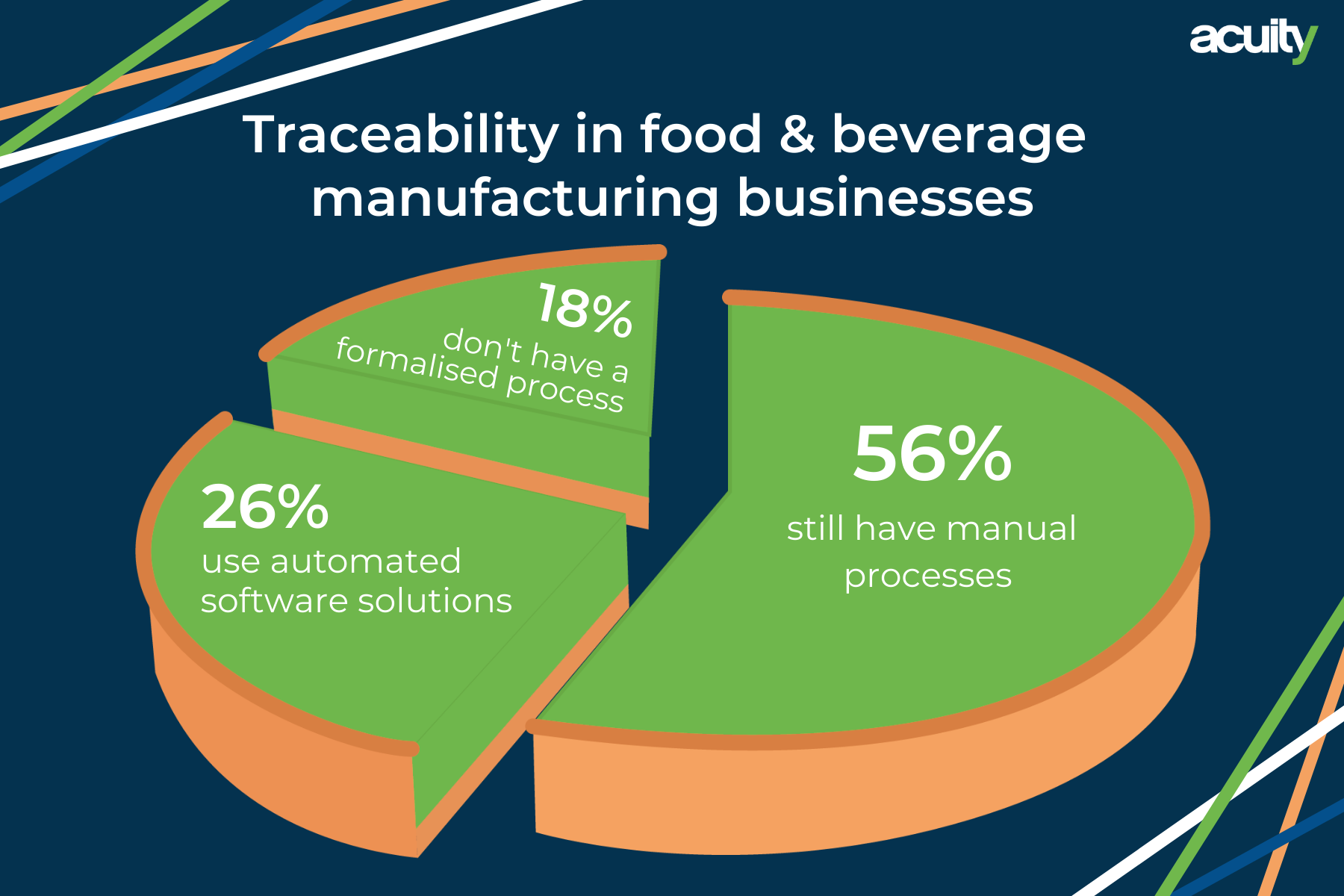3 minute read
Traceability in food and beverage businesses
According to ResearchandMarkets.com, the food and beverage market reached a value of over $6.1 billion (£4.5 billion) in 2021, and is forecast to grow at a compound annual growth rate of 7% in the next few years to reach over $8.1 billion (£6 billion) in 2025.
Of course, over the last few years the market, like many others, has been affected by global events and challenges — notably COVID-19 — and ever-changing regulatory pressures.
The impact has been felt particularly strongly by food and beverage manufacturers who face a daily battle with quality control, compliance, and pricing.
In such a fast-paced industry — and one that is so important — it is vital that manufacturers have end-to-end visibility of their supply chain to monitor shipping, safe storage of perishable goods and raw materials, and information about the origins of ingredients and products.
The current state of traceability in food and beverage businesses
IDC’s latest supply chain survey states that “64% of brand-oriented manufacturers admit that the lack of supply chain visibility and flexibility will cause major issues in the future if not addressed appropriately”.
Their research also discovered that 96% of food and beverage companies will “focus on improving their visibility”, while 51% are focusing on the end-to-end supply chain.
Leaner processes and end-to-end traceability greatly assist in achieving optimal levels of profit and efficiency.
However, internal challenges aren’t the only driving force for the need to adopt full traceability in food and beverage businesses.




